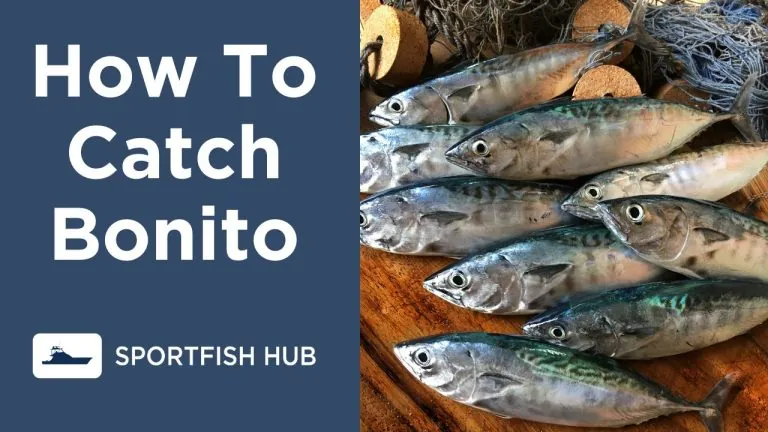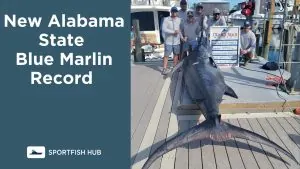Bonito are strong, fast fish that put up a tremendous fight on light tackle. Found in both the Atlantic and Pacific oceans, these smaller tuna cousins make a thrilling target whether fishing from shore, pier or boat. Read on for the ultimate guide to catching bonito, including tips, techniques, bait, lures and how to cook them.
What is a Bonito Fish?
Bonito belong to the Scombridae family along with mackerel and tuna. There are five main species:
- Atlantic bonito (Sarda sarda) – found in the Mediterranean and eastern Atlantic
- Striped bonito (Sarda orientalis) – found in the western Pacific
- Pacific bonito (Sarda chiliensis) – found along the American Pacific coast
- Australian bonito (Sarda australis) – found around Australia and New Zealand
- Black skipjack (Sarda lineolata) – found in the eastern Pacific
Bonito have a streamlined, torpedo-shaped body with dark blue coloring on top and silvery sides. They are smaller than tuna, growing up to 30 inches long and weighing 6-12 pounds on average. Some varieties can reach up to 40 inches and 25 pounds.
Known for their speed and acrobatic leaps when hooked, bonito put up a strong fight similar to tuna. This makes them a popular light tackle and fly fishing target.
Best Fishing Techniques for Bonito
You can catch bonito from shore, piers, jetties, boats, and kayaks. They are usually found in schools attacking baitfish near the surface, so locating a school is the first step.
Once you’ve found actively feeding bonito, here are the best techniques to catch them:
Casting Lures and Jigs
When bonito are breaking the surface in a feeding frenzy, cast shiny spoons, plugs and jigs into the school and reel fast to trigger reaction strikes. Metal lures like Deadly Dicks, Krocodiles and Crippled Herring work well.
As soon as your lure hits the water, reel as fast as you can. The goal is to mimic injured baitfish that bonito key in on. If the school sounds like a machine gun going off, speed up the retrieve even more.
Trolling Lures
Trolling with swimbaits, diving plugs and spoons is an effective way to locate bonito schools offshore. Once you hook up, throw out chum or drop live bait to keep them in the area.
Smaller Clark spoons and cedar plugs are good trolling lures for bonito. Run them behind planers or downriggers to target different depths. A spreader bar with squid skirts is another good option.
Still Fishing with Bait
You can anchor up current from bonito schools and drift live anchovies, sardines or squid back to them on a fish finder or sliding sinker rig. This is a good technique once you’ve located actively feeding fish.
Chumming with ground baitfish can also draw bonito to your boat or shore fishing spot. Then fish chunks of bait or spoons in the slick.
Fly Fishing
Bonito will eagerly take flies stripped fast on the surface or fished just under the surface with a sinking line. Deceivers, Clousers and baitfish patterns work well. Use a 9-10wt rod and intermediate line to handle their blistering runs.
Position yourself up-current from breaking fish and cast into the school. Strip the fly as fast as possible once it hits the water.
Best Baits for Bonito
Bonito are aggressive predators that primarily feed on small fish and squid. Good baits include:
- Anchovies
- Sardines
- Mackerel
- Silversides
- Shad
- Squid
- Shrimp
Live bait is always best, but cut bait works well too. When fishing cut bait, add scent to mimic injured fish that bonito key in on.
To hook live baits, run the hook from bottom jaw through the top of the head to prevent spinout on the retrieve.
When using squid, cut strips, tentacles or whole bodies in half. Fish them on a jighead or under a float.
Top Lures and Jigs for Bonito
Anything that mimics small baitfish and gives off flash and vibration will catch bonito. The best lures include:
- Metal spoons – Kastmasters, Krocodiles, Crippled Herring, Deadly Dicks, etc. Gold, silver, green and blue colors work well.
- Plugs – Yo-Zuri Crystal Minnows, Rebels, Bombers, etc. Bonito prefer a fast erratic action.
- Soft plastic swimbaits – Fish them on jigheads or under popping corks. White and pink are good colors.
- Bucktails and jigs – Tie bucktail jigs using white or pink hair. Add gold mylar tubing for flash. Vertical jig or cast and retrieve.
- Flies – Deceivers, Clousers, crease flies and small baitfish patterns. Chartreuse and white are top colors.
- ChatterBaits and vibrating bladed jigs trigger reaction strikes from bonito when retrieved quickly.
Match lure sizes to the baitfish bonito are feeding on. Go as light as possible for long casts to breaking fish.
Shore Fishing for Bonito
Look for bonito within casting distance of jetties, piers, rock formations and points. Find areas with currents and moving water that corral baitfish.
The best lures for shore fishing are small metals like Deadly Dicks, Crippled Herring and Krocodiles. Cast into schools and reel fast.
You can also still fish with live anchovies, sardines or squid under a float. Add enough weight to hold bottom and drift baits into the current.
Popping cork rigs work well to deliver live bait to bonito near the surface. Let out line after the initial “pop” to create an enticing wounded baitfish commotion.
Bonito Fishing Tips
Follow these tips to improve your odds of connecting with bonito:
- Find birds and current lines – Feedings schools push baitfish to the surface and attract seabirds. Look for diving birds to mark schools.
- Watch your rod tips – Bonito often sip bait without fully taking it. Watch for subtle bites. Set the hook at any little tap or abnormal movement.
- Use fluorocarbon leaders – Bonito have excellent vision. Fluorocarbon leaders are less visible than monofilament. Use at least 20 lb test.
- Reel fast – Bonito prefer lures retrieved at warp speed. Don’t be afraid to reel unnaturally fast when jigging or casting to trigger reaction strikes.
- Fish early and late – Bonito are most active at dawn and dusk like many predators. Focus your efforts during low light periods.
- Chum offshore – Use ground baitfish, sardines or squid to draw bonito boats and create a scent trail.
How to Cook and Eat Bonito
With proper handling, bonito can make excellent table fare. Their high oil content makes them perfect for grilling, smoking, pickling and canning. Follow these preparation tips:
- Bleed bonito immediately after catching by cutting the gills or throat. This removes blood from the flesh.
- Ice the fish right away. Keeping bonito cold minimizes oil breakdown and strong flavors.
- Remove dark red bloody portions of the flesh before cooking. This is where most of the “fishy” taste concentrates.
- Smoke, grill, pickle or pan-sear. Flaky bonito takes well to high heat cooking methods. Barbecuing brings out the best flavor.
- Use in fish dips, spreads and sushi. Flaked bonito is often an ingredient in Japanese katsuobushi and fish sauce.
Don’t let the bonito’s undeserved reputation prevent you from keeping a fish or two. With a little TLC, they can make a delicious fresh catch.
Conclusion
Pound for pound, bonito offer one of the hardest fights in saltwater. Their small size makes them the perfect light tackle adversary. Follow the tips in this guide to find and catch more of these hard-charging tuna cousins near you.
FAQ
-
How do you bait Bonito?
The best and most popular method for baiting Bonito is to cut them into strips and troll them behind the boat.
-
What speed do you troll for Bonito?
To catch Bonito on the troll, keep your speed between 4 and 6 knots. If bluefish become an issue, bump the trolling speed up to at least 6 knots.
-
Do Bonitos fight hard?
Bonitos are meaty and full of muscle, just like Tuna, so yes, they do tend to fight hard.
-
What pound fishing line for Bonito?
An 8-17 pound class rod is good if you want to catch and land Bonito quickly.
-
What is the best time of day to catch Bonito?
Just as with many fish, the morning around dawn is the best time to catch Bonito.
-
What fish eat Bonito?
Swordfish, Tuna, Marlin, and other large predatory fish each Bonito.












